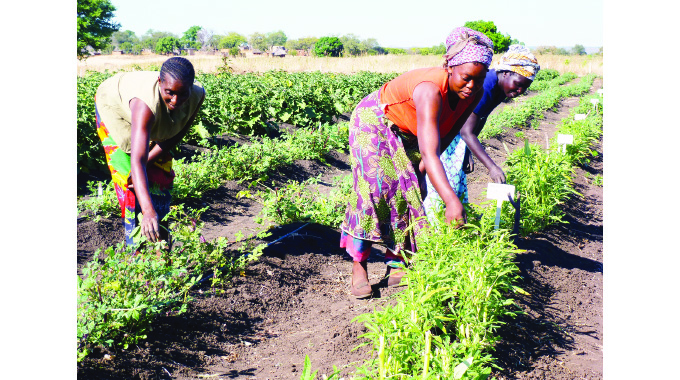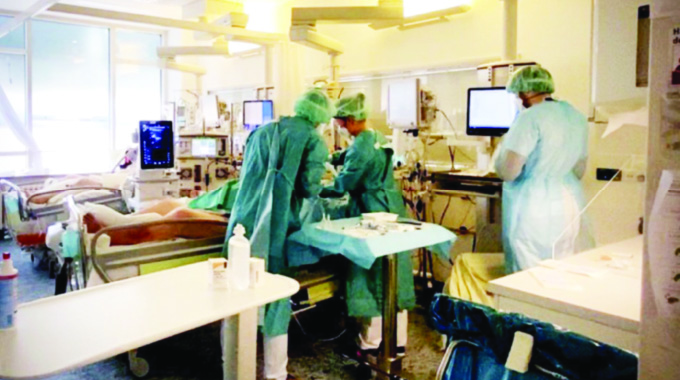Increase support for women to remain engines of farming

Agriculture has for many years been the mainstay of several economies in Africa with the issue of land being the major reason why millions of Africans went to war against colonisers.
Long after attaining independence, African countries continue to wade off threats of possible dispossession of the same land they reclaimed from colonialists, albeit under different circumstances.
Because of the strategic role that land plays in ensuring food security and other economic activities, agriculture remains the major beneficiary for land usage in African countries that have huge swathes of arable land.
This has seen Governments planning around agriculture, through funding different agricultural programmes, mechanising the sector as well as capacitating the farmer on the proper land usage to ensure maximum production.
Mindful of the role women play in food security, member countries are also resourcing gendered agriculture by coming up with programmes that support female farmers as part of a litany of measures to strengthen food security at the home front.
Countries such as Tanzania, Malawi, and Uganda have put in place measures to narrow the gender gap in their agricultural productivity.
For Rwanda, it has been a revolutionary process where women are enjoying a fair share in the sun and have been empowered from the field right up to the bank.
Through an initiative called “buy from women” Rwanda has encouraged adoption of digital agriculture technologies to increase access to markets for women farmers, who were previously marginalised.
As a result, the country now boasts of digital-enabled platforms that connect women farmers to agribusiness information, financial instruments, and produce markets.
Consequently, through this initiative, women farmers have improved their entire agribusiness life cycle, and have been transformed into business people of repute.
It is against this background of progressive empowerment of women that we welcome the decision by Zimbabwe to train more than 1 million women farmers under the Government Climate Proofed Presidential Inputs programme.
The decision to train the women is timely and strategic considering that most women small holder farmers do not have draught power.
Under this programme, the majority of women were trained under the Presidential Cotton Inputs Scheme, and that development alone will greatly insulate women against the effects of climate change that have seen a decline in production over the years.
Such an opportunity will not only result in women increasing their production, but it should enhance their profile in agriculture by ensuring that they also get the tools of trade and access to other means of production.
The redress of historical imbalances such as lack of land, ownership and inability to access financial services are crucial towards the attainment of gendered agriculture.
Unless, other fundamentals such as access to finance, land and ownership have been addressed, women will continue to hold a peripheral role in agriculture as labourers when they should be in the forefront because of the crucial role they have historically played in food security globally.
Although the percentages of contribution vary depending on the region, women’s contribution has sustained agricultural activities for years.
According to the Food and Agriculture Organisation, aggregate data shows that women comprise about 43 percent of the agricultural labour force globally and in developing countries.
Although the figure masks considerable variation across regions and within countries according to age and social class, women have been the engine that drives agriculture.
In Sub-Saharan Africa, women farmers contribute up to 50 percent of labour on farms, while the percentage is much higher at household level, where their contribution is recorded as unpaid labour, since they need to produce for family consumptions.
Despite such monumental achievement, the majority of women do not own the land they work on and even struggle to get financial assistance from banks to fund their activities due to lack of collateral.
Women’s access to land has remained a grey area, which still needs to be addressed if the nation is to affirm women’s involvement in economic empowerment.
There is still need to address the historical imbalance by ensuring that women do not continue to farm on land they do not own, but do own the land, either individually or in some form of stable dual ownership arrangement.
The current situation that most women farmers find themselves in where they till on the land they do not own, calls for an urgent redress if empowerment of women in agriculture is to be a sustained as a long term objective of the country.
A study by the UN’s Food and Agriculture Organisation found that, like in other developing countries, women in Zimbabwe do most of the agricultural work and tend to be more dependent on farming.
Of the women populace in Zimbabwe, approximately 80 percent of them live in communal areas, where they constitute 61 percent of the farmers. Most are unpaid family workers and spend an average of 16 hours a day tending fields.
The training of 1 million women in agriculture is a step in the right direction, which needs to be ably supported by also availing land and finances so that they can be effectively empowered, instead of paying lip service to such an important constituency.
For Zimbabwe and other like-minded countries that are advocating for gendered agriculture and closing the gender gap, it needs to focus on three critical areas, promoting and protecting land rights for women, improving financial services and inputs for women as well as decision making power.
In far too many contexts, women farmers lack the authority to manage the crops they produce or the income they generate and end up surrendering the proceeds to their husbands or a male relative.
This has far-reaching implications for development, as the majority of the women fail to get money and resources, they would have worked for, leaving them worse off than before.
Given the role of agriculture in Zimbabwe and beyond, enabling women farmers to control their resources is important to achieving not only UN Sustainable Development Goal (SDG) 5 — gender equality and empowerment of women and girls — but has a lot of positive spin offs, including elimination of poverty hunger (SDG2).
For a country that has set its sights on attaining the middle income status by 2030, as well as the implementation of the National Development Strategy 1, where economic growth strategies and value chain and structural transformation are key pillars, women would need to be actively involved.
Their numerical significance makes them a crucial constituency in national development, while they are also key in ensuring that tenets of the NDS1 and the vision is attained.








Comments